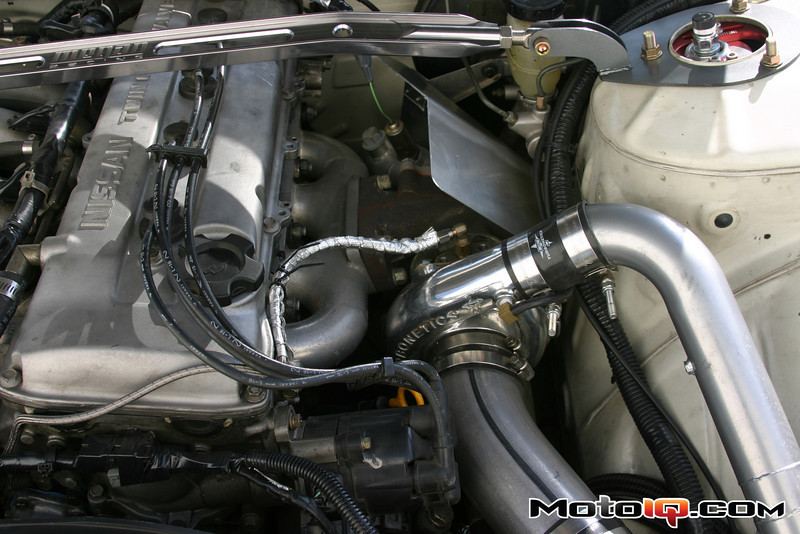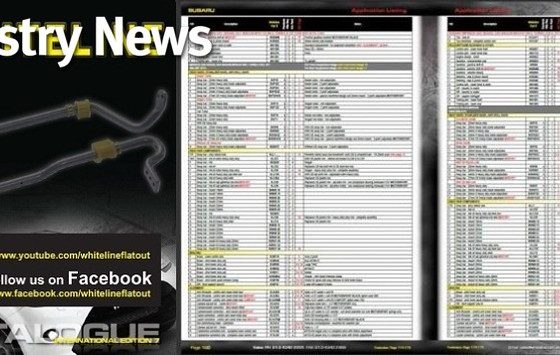 |  |  |
The Controversy- Turbo I4, Turbo V6 vs GM LS7!
By Mike Kojima
There has been a lot of controversy burning up the forums about the issue of V8 swaps, particularly the GM LSX series of engines in drifting. Digging through some data, we thought it might be cool to show you the differences between these engines. Here is the dyno results from Matt Powers' Turbo KA24DE, Dai Yoshihara's Turbo VQ35DE and Matt Powers' GM LS7.
 |
| Here is the Data! |
There is no doubt about the appeal of the turbo import engine. Some of us like the technical challenge from doing more with less. Some of us like the sophistication of DOHC and turbocharging. Some of us just plain hate domestic products and get angry when they are transplanted into our favorite imports. For a moment let's forget our personal biases and look at some numbers.
The aqua and yellow lines represent the power and torque of Matt Powers' much lamented KA24DE. Powered by a pretty cool turbo system the KA gave respectable power, enough to propel Matt into 16th place in the FD standings. The only higher placing 4 cylinder was Ken Gushi's Scion program which was much better funded. The data was taken from a 21 psi dyno pull but Matt never ran the car that high, only running 20 psi at Irwindale. He usually ran from 17-19 psi for fear of blowing a head gasket. Head sealing was an issue with the KA which was reliable other than that issue. Matt's team spent a lot of development time trying to improve head seal but that was the limiting factor of the engine.
Next up is the pink and black lines of Matt's new GM LS7. The peak power numbers are not as impressive as the width and smoothness of the power curve. At low RPM the KA24DE is chugging along at 100 lb ft of torque while the LS is pumping out a tire liquefying 400 lb ft of torque! The torque and power delivery is broad, smooth and predictable with no turbo lag in transient response. Guess which is going to be better for drifting?
Last up is Dai Yoshihara's JWT Turboed VQ35DE from his personal 350Z. The VQ is the peak power king with nearly the same low end torque as the LS7. The powerband is more lumpy and non linear. The VQ has a pretty decent powerband but you still got to consider that it will have a slight amount of transient lag and the lumpiness will make it slightly more difficult to drive.
Remember the dyno doesn't show an important factor, transient response, which is the amount of time it takes from when the driver moves his throttle foot to when the engine starts to make power to fulfill the control command. The V8 is the best by far in this regard and the turbo 4 worst with the turbo six somewhere in between. Fast response makes the car easier to drive.
A thing to consider is that none of these motors are examples of the max power these engines can produce. They are all somewhat mild and tuned for drifting and wide powerbands. All three of these motor families can make much more power with different parts selections. The KA and VQ are both internally modded and higher dollar builds with the addition of expensive turbo systems, the LS7 is pretty stock with the exception of a mild Katech cam, Hinson headers and a FAST intake manifold.
The LS is lighter, simpler and lower stressed than the other two engines and when you consider the cost of the turbo stuff, much cheaper and easier to maintain and repair. Finally the LS can make this level of power with 91 octane pump gas where the turbo cars must swill expensive VP C16 race fuel to ensure reliability under competition conditions.
We feel that the data clearly shows that the turbo 4's days as a viable powerplant in professional drifting are numbered. Perhaps with the application of WRC and Rallycross technology, and newer generation turbos like the Garrett competition series and Borg Warner's EFR with more sophisticated use of electronic antilag strategies, the turbo 4 might have a chance. Unfortunately no drift team has applied any of this to date even though this technology is native to Motec, Pectel and other high end engine management systems. Other companies like Precision Turbo have new technology in the works as well to make turbos faster responding.
Papadakis Racing will field a Borg Warner EFR turbo powered 4 cylinder Scion with Frederic Aasbo driving for 2011. We are sure that Steff has plenty of tricks up his sleeve. The 4 cylinder camp should watch his lead.
That's what the data shows, the choice is up to you.



